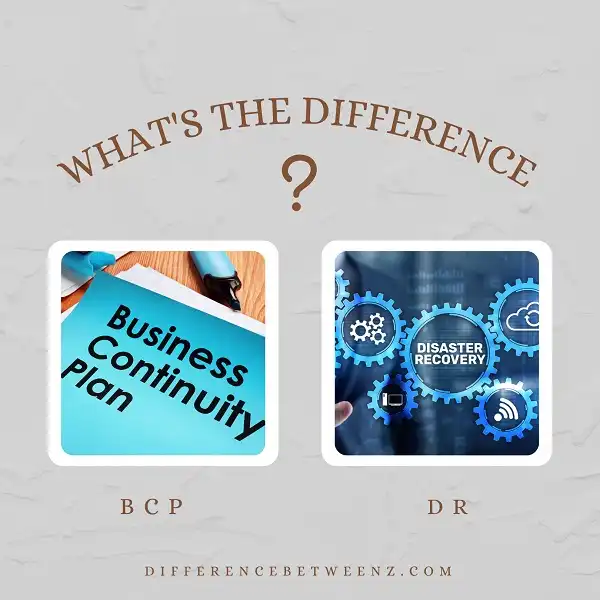In the event of an emergency, it is critical that your business has a plan in place to protect its operations. Business continuity planning (BCP) and disaster recovery planning (DRP) are two common strategies for protecting your company. But what’s the difference between BCP and DRP? This article will explore the key differences between BCP and DRP, and help you decide which type of plan is best suited for your organization.
What is BCP?
BCP is short for business continuity planning. BCP is a proactive process that identifies potential threats to an organization and the actions that can be taken to minimize the impact of those threats. BCP helps organizations be prepared for disruptions such as natural disasters, power outages, pandemics, and terrorist attacks. BCP includes steps such as developing a plan, identifying key personnel, and establishing alternate work sites. BCP is important because it can help organizations survive disruptions and minimize the impact on their operations. Implementing a BCP can be complex, but the benefits are clear: BCP can help organizations keep their doors open during times of crisis.
What is DR?
DR, or disaster recovery, is a process or set of procedures that help an organization continue its operations following a major disruptive event. DR typically involves the creation of backups or replicas of critical data and systems, as well as the establishment of procedures for restoring them in the event that they are lost or damaged. While the goal of DR is to minimize the downtime and data loss caused by a disaster, it is important to note that it is not intended to prevent disasters from happening in the first place. Rather, DR is designed to help organizations cope with the aftermath of a disaster and resume normal operations as quickly as possible.
Difference between BCP and DR
BCP and DR are two terms often used interchangeably, but there is a big difference between the two. BCP stands for business continuity planning, and it refers to the process of creating a plan to keep mission-critical operations running in the event of an interruption. DR, on the other hand, stands for Disaster Recovery, and it refers to the process of recovering from an interruption. BCP is focused on maintaining operations, while DR is focused on restoring them. As a result, BCP is a proactive measure taken before an interruption occurs, while DR is a reactive measure taken after an interruption has occurred. Both BCP and DR are important components of a strong business continuity strategy, but they serve different purposes.
Conclusion
BCDR planning is essential for all businesses, regardless of size or industry. By understanding the difference between business continuity and disaster recovery plans, you can create a plan that will help your business survive any type of disruption.


